Table of Contents
Remembering Juan Tizol (1900-1984), jazz trombonist and composer.

Best Sheet Music download from our Library.
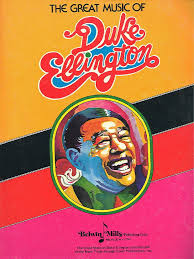
Juan Tizol (short biography)
Juan Tizol Martínez (22 January 1900 – 23 April 1984)[1] was a Puerto Rican jazz trombonist and composer. He is best known as a member of Duke Ellington’s big band, and for writing the jazz standards “Caravan”, “Pyramid”, and “Perdido”.
Juan Tizol was born on January 22, 1900 in the city of Vega Baja, Puerto Rico, into an illustrious family. The impact of the Tizols on the island is confirmed by several streets and squares that bear the name of eminent members of the lineage: doctors, politicians and musicians. In this last section is Manuel Tizol Márquez.
Come join us now, and enjoy playing your beloved music and browse through great scores of every level and styles!
Can’t find the songbook you’re looking for? Please, email us at: sheetmusiclibrarypdf@gmail.com We’d like to help you!
Manuel Tizol is considered by respected musicologists as the main personality of instrumental music in Puerto Rico during the first half of the 20th century, both in the classical and popular genres. In the first section he founded the San Juan Concert Society , which had an orchestra capable of performing the repertoires of all the great European masters of classical music. In addition, he established and directed the first Puerto Rico Symphony Orchestra official . In the second field he formed a dance orchestra and led the San Juan Municipal Band . With both groups he made recordings for the Columbia and Victor labels , becoming one of the pioneering national artists in the recording industry.
Manuel Tizol was Juan Tizol ‘s uncle and he took care of his musical training. He taught him to play the violin and euphonium, as well as to read and write music. From the age of 10, Juan was a member of his uncle’s dance orchestra, playing the violin or euphonium at all types of social events.
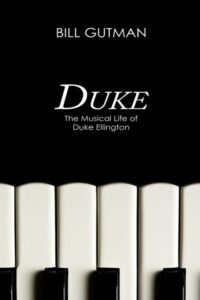
Please, subscribe to our Library.
If you are already a subscriber, please, check our NEW SCORES’ page every month for new sheet music. THANK YOU!
Around 1916, a German orchestra visited Puerto Rico and it is very possible that Juan Tizol heard a piston trombone played by a musician for the first time. Whatever the case, at that time it is documented that Juan played the aforementioned instrument in the orchestra of the Old San Juan Teatro Apolo .
In 1920, Juan Tizol was part of a band made up entirely of Puerto Rican musicians with the aim of touring the US. Once they arrived in Washington they were hired by the Howard Theater to play at the shows and to accompany the bands. silent movies Once they ran out of this work, the band disbanded.
Juan Tizol remained in Washington and there were several bands that required his services. One of them was the White Brothers’ Band , whose members included trumpeter Arthur Whetsol . This musician was the one who told Duke Ellington about Juan Tizol . The result was that he hired him for his orchestra. It was the year 1929 .
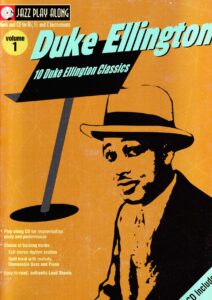
The first thing Duke Ellington did when Juan Tizol joined his orchestra was to name him “ chief copyist . ‘s music into sheet music ” He was in charge of transcribing Duke . The trumpeter, Rex Stewart , summed it up this way:
“ Tizol ‘s orchestra was an important wheel in the gear that moved Duke . He had to transcribe into sheet music the ideas that his boss tried to make clear. This was not an easy job since there were times when these avant-garde concepts could not be written. Tizol then wrote a kind of sketch and later spent hours trying to faithfully interpret what the “boss” had tried to explain to him and translate it into a score.”
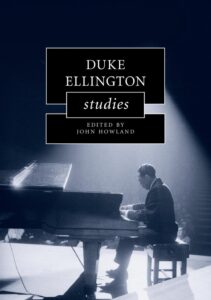
In 1933, musicologist HA Overstreet stayed with the Ellington Orchestra on one of its tours. As a result of his observations he wrote a book titled The Duke Reader in 1995. And among other things he says:
“…Juan Tizol had been busy writing the score for each musician’s arrangement of the trombone, saxophone and trumpet sections. Sometimes indicating them schematically for later elaboration. This approximate score served as a reference to resolve the discussions, since these appeared several times, until the entire arrangement was completed. These arguments, which are politely called exchanges of ideas, were pure and simple arguments. ‘s scores When the arrangement was finished and Tizol went from schematic to definitive , Ellington detected any deviation from them in the event that a musician did not adhere to them.
The first recording that Juan Tizol made (except for Back and Tan , for the short of the same title) was September 16, 1929. In that session, four songs were performed, one of them being titled The Duke Steps Out composed by Duke Ellington , Johnny Hodges and Cootie Williams .
Juan Tizol ‘s orchestra has an important role in the history of jazz, but not as an instrumentalist in Duke Ellington , but as a composer while he was a member of it.
I will start by naming his composition Caravan, which according to his own words he had already written before leaving Puerto Rico.
Tizol initially failed to appreciate the commercial potential of his song to the point that he sold his rights to Irving Mills ‘s manager, – who, apart from being Duke Ellington owned his own music publishing company – for $25. When Caravan became a big seller, Mills gave Tizol a portion of his royalties.

‘s first recording Caravan was made by a combo called Barney Bigard & His Jazzopaters in which all its members were also members of the Ellington orchestra , including himself: Cootie Williams , trumpet; Juan Tizol , valve trombone; Barney Bigard, clarinet; Harry Carney , baritone sax; Duke Ellington , piano; Billy Taylor, double bass; Sonny Greer , drums. The recording was made on December 19, 1936.
Duke Ellington & His Orchestra: Caravan (1937)
Duke Ellington ‘s composition at the moment had no intention of recording Tizol , but its exotic rhythm led him to perform it at the Cotton Club . The club parades were broadcast on radio throughout the country and listeners were dazzled by the song. This led Ellington to record it with his orchestra and this happened on May 14, 1937: Rex Stewart , cornet; Wallace Jones , Cootie Williams , trumpets; Lawrence Brown , Tricky Sam Nanton , Juan Tizol , trombones; Barney Bigard , clarinet; Johnny Hodges , Otto Hardwick , alto saxes, Harry Carney , baritone sax; Duke Ellington , piano; Fred Guy , guitar; Hayes Alvis or Billy Taylor , double bass; Sonny Greer , drums.
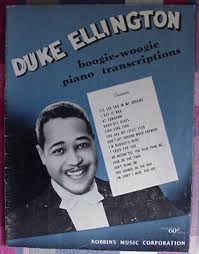
Caravan entered the top 20 and Duke Ellington kept it in the band’s repertoire until the rest of their days. recordings He left more than 100 Caravan . One of them a few weeks before his death.
It would be mid-1941 when several members of Duke Ellington ‘s orchestra were trying to find a jazz club in the alleys of New Orleans (where they had given a concert) and after kicking around for a while, Juan Tizol asked if anyone knew Where they were, one of the musicians answered that on Perdido Street (that’s how it is in Spanish). Tizol , whose native language was Spanish, smiled fangly when he realized that they were lost right on Perdido Street.
Duke Ellington – Perdido
The writer Stuart Nicholson relates in his book Reminiscing in Tempo: A portrait of Duke Ellington that Juan Tizol told him that he wrote a song while riding the train which he titled Perdido in reference to Perdido Street in New Orleans.
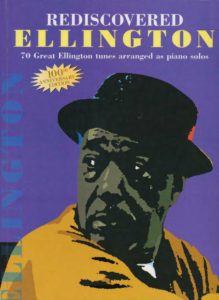
Perdido , given its harmonic structure, is one of the most used by jazz musicians of all eras and styles to perform in jam sessions .
band played it The first time the Ellington was in a radio program held on December 3, 1941. Almost two months later, on January 21, 1942, the aforementioned orchestra entered a Chicago studio where they recorded four songs. . One of them was Lost. When the single that contained it was released, it reached number 21 on the list of best-selling songs.
In all the books, essays, and articles about Juan Tizol, the confrontation he had with Charles Mingus always appears.
In February 1953, the double bassist joined Ellington ‘s band as a replacement. In the subsequent rehearsal, Juan Tizol gave him a sheet of music with the notes he had to play in a certain part of a song. When the time came Mingus ignored the score and played the notes an octave higher . This change infuriated Tizol and he went to the double bassist to tell him that if he wanted the double bass to sound like a cello he would have hired a cellist. A scuffle broke out between them, but it didn’t get any bigger.

However, Charles Mingus ‘s autobiography titled “ Less than a Dog” describes a completely different account of the confrontation. According to the double bassist , when Tizol addressed him, he blurted out: “You, like all blacks, don’t know how to read a score” (an absurd phrase when it comes to the Ellington orchestra) and also showed him a knife. Mingus did not give up and went to a wall where he grabbed a fire axe. Tizol ran away and then Mingus approached the chair where the trombonist was sitting and broke it in two with an ax blow.

‘s book When everything had calmed down, and according to Mingus , Ellington said to the double bassist: “For a moment I hoped that you had decided to start playing, but instead you broke Juan ‘s chair in two with a ax Seriously, Charles , that’s destructive. Everyone knows that Juan has a knife, but no one has taken him seriously. He likes to take it out and show it to people, you understand? I’ve never fired anyone, but you have to leave the band. I have enough problems already. Juan is an old problem, but I know how to handle him, but it seems that you have some new tricks that I don’t know about, so I am forced to ask you to be so kind and tender your resignation.
Charles Mingus ‘s band only lasted three days in Ellington . Scholars of jazz history give little credence to the account of the Tizol/Mingus incident as it appears in the double bassist’s book.
Juan Tizol left the Ellington Orchestra in 1944 because his wife, Rosebud , became ill and he wanted to spend more time with her at their home in Los Angeles. At that time, Harry James had his center of activities in that city and offered the trombonist a position in his orchestra, which he accepted. In the end the musical relationship between James and Tizol lasted until 1951. During that time they recorded several albums together. One of the songs was a composition written by both of them titled Keb-Lah and arranged by Tizol (which has a Caravan feel to it ). The recording was on July 5, 1946.

That same year, 1951, Juan Tizol ‘s band returned to his position in Ellington , and it was for a reason that the latter tells it this way in his book “Music is my Lover” from 1973:
“In 1951, Johnny Hodges , Lawrence Brown and Sonny Greer left the band at the same time. Shortly after, I traveled to Los Angeles and received a call from the Tizols : “Come have dinner with us.” At his house Tizol told me: “All you have to do is ask us and Louis Bellson , Willie Smith and I will leave Harry James to play with you.”
That was the solution they had in mind.
Naturally I was worried about who it might affect and who might be offended by something like that, since I had never had the habit of stealing musicians from other orchestras, but the situation at that moment was a real emergency. The truth is that that sounded too good to be true. If I had been talking to people I didn’t know I would have suspected that they were setting me up of some kind, but I knew Tizol and Rosebud perfectly well . In addition to having Juan Tizol again , Willie Smith was the best alto saxophone player in the world and everyone said the same about drummer Louis Bellson.
We put the plan in motion and everything went well.”
This second stage of Tizol with Ellington lasted three years, after which the trombonist settled on the North American West Coast where he remained until the end of his days. He made sporadic appearances live and in recording studios with the Harry James , Nelson Riddle and Louis Bellson orchestras . There was a third stage of Tizol with Ellington in the 60s and 61s in which he participated in some record recordings.
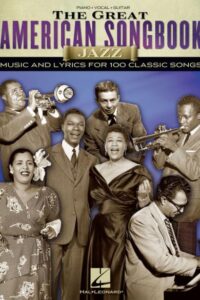
Juan Tizol left this world on April 23, 1984 in the city of Inglewood, California, two years after losing his wife Rosebud.
Please, subscribe to our Library.
If you are already a subscriber, please, check our NEW SCORES’ page every month for new sheet music. THANK YOU!
According to Will Friedwald, Frank Sinatra’s biographer, Tizol was in fact the first prominent orchestral composer to fuse Latin Music with Big Band Jazz Music.

To demonstrate that the musicians of Ellington’s orchestra, and he himself, learned very well the lessons on hot Latin rhythms that Juan Tizol taught them, I leave you the song composed by the trombonist titled Moon over Cuba and that Ellington and his boys recorded on July 2, 1941 in Hollywood.
Moon Over Cuba (1999 Remastered)
Duke Ellington and His Famous Orchestra.
Personnel:
Trombone: Joe Nanton Trombone: Lawrence Brown Trombone, Composer: Juan Tizol Clarinet, Tenor Saxophone: Barney Bigard Alto Saxophone, Clarinet: Johnny Hodges Alto Saxophone: Otto Hardwick Tenor Saxophone: Ben Webster Alto Saxophone, Baritone Saxophone, Clarinet: Harry Carney Piano, Composer: Duke Ellington Guitar: Fred Guy Bass: Jimmie Blanton Drums: Sonny Greer.
Juan Tizol Discography (on Wikipedia)
As sideman
With Louis Bellson
Journey Into Love (Norgran, 1954)
Drumorama! (Verve, 1957)
Music, Romance and Especially Love (Verve, 1957)
The Brilliant Bellson Sound (Verve, 1960)
Louis Bellson Swings Jule Styne (Verve, 1960)
Live in Stereo June 28, 1959, at the Flamingo Hotel Vol. 1 (Jazz Hour, 1992)With Duke Ellington
Ellington Uptown (Columbia, 1951)
Ellington '55 (Capitol, 1954)
Seattle Concert (RCA Victor, 1954)
Ellington Showcase (Capitol, 1956)
Liberian Suite and a Tone Parallel to Harlem (Columbia, 1956)
Piano in the Background (Columbia, 1960)
Selections from Peer Gynt Suites Nos. 1 & 2 and Suite Thursday (Columbia, 1960)
The Nutcracker Suite (Columbia, 1960)
Paris Blues (United Artists, 1961)With Harry James
Dancing in Person with Harry James at the Hollywood Palladium (Columbia, 1954)
Soft Lights, Sweet Trumpet (Columbia, 1954)
Harry James in Hi-fi (Capitol, 1955)
Jazz Session (Columbia, 1955)
Juke Box Jamboree (Columbia, 1955)
More Harry James in Hi-fi (Capitol, 1956)
Requests On-the-Road (MGM, 1962)With others
Count Basie, First Time! The Count Meets the Duke (Columbia, 1962)
Benny Carter, Cosmopolite (Norgran, 1954)
Nat King Cole, After Midnight (Capitol, 1956)
Nat King Cole, The Piano Style of Nat King Cole (Capitol, 1956)
Maxwell Davis, Compositions of Duke Ellington and Others (Crown, 1960)
Ella Fitzgerald, Get Happy! (Verve, 1959)
Ella Fitzgerald, Ella Fitzgerald Sings the Irving Berlin Song Book Vol. 1 (Verve, 1960)
Peggy Lee, The Man I Love (Capitol, 1957)
Peggy Lee, Jump for Joy (Capitol, 1958)
Frank Sinatra, Frank Sinatra Sings for Only the Lonely (Capitol, 1958)Juan Tizol Discography (on the Discography of American Historical Recordings)
| Artist or Composer / Score name | Cover | List of Contents |
|---|---|---|
| Spaces II Contemporary Funk Jazz |
 |
Spaces II Contemporary Funk Jazz |
| Spaces III Jazz Mixed Bag |
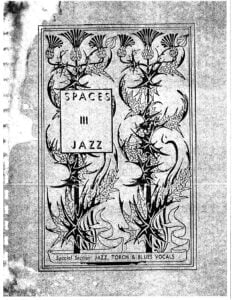 |
Spaces III Jazz Mixed Bag |
| Spaces IV CompendIum Of Jazz Tastes |
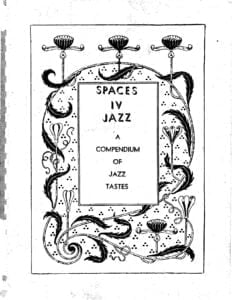 |
Spaces IV CompendIum Of Jazz Tastes |
| Spaces V Bebop Jazz |
 |
Spaces V Bebop Jazz |
| Spaces VI Jazz Solos |
 |
Spaces VI Jazz Solos |
| Spain (For Piano Solo) – Chick Corea (Musescore File).mscz | ||
| Spandau Ballet The Best Of Spandau Ballet Songbook |
 |
 |
| Spanish And Italian Folk Songs 1887 | Spanish And Italian Folk Songs 1887 | |
| Spanish Piano Music 24 Works |
 |
|
| Spartacus (Alex North – Khachaturian) love theme Bill Evans (Guitar with Tablature) | Spartacus Love theme | |
| Spartacus (Khachaturian) – Love Theme (Musescore File).mscz | ||
| Speed Guitar – German Schauss |
 |
Speed Guitar – German Schauss |
| Speed Mechanics For Lead Guitar with Tablature Book + MP3 Audio Play Along (embedded) b Troy Stetina |
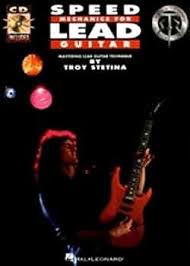 |
|
| Spencer Williams – Basin Street Blues Guitar Solo |
 |
|
| Spice Girls Greatest Hits |
 |
Spice Girls Greatest Hits |
| Spider-Man Costume Montage Danny Elfman |
 |
|
| Spider-Man Main theme Danny Elfman |
 |
|
| Spider-Man 2 Hans Zimmer You’re My Boy |
 |
|
| Spider-Man Into the Spider-Verse Sunflower by Austin Richard Post |
 |
|
| Spider-Man James Horner The Amazing Rooftop Kiss |
 |
|
| Spider-Man Theme From (Full Score) |
 |
|
| Spiderman – Costume Montage – Danny Elfman | ||
| Spiderman – Main theme – Danny Elfman |
 |
|
| Spiderman – Maintheme – Danny Elfman | ||
| Spiegel Im Spiegel (Violoncello And Piano) Arvo Pärt (Musescore File).mscz | ||
| Spirit In The Sky Norman Greenbaum (Piano Vocal Guitar) | Spirit In The Sky Norman Greenbaum (Piano Vocal Guitar) | |
| Spirited Away – Joe Hisaishi |
 |
Hisaishi Spirited Away |
| Spring Awakening A New Musical Piano Vocal Selections by Duncan Sheik and Steven Sater |
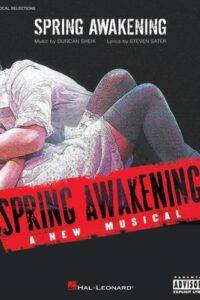 |
Spring Awakening A New Musical Vocal Selections |
| Spring is here (jazz lead sheet play along) | Spring is here | Audio MP3 included in Aebersold’s Vol. 34 |
| Spring Time Ballet – Bilitis OST (Francis Lai) | ||
| Stacey Kent – The Best of Piano Vocal guitar Chords |
 |
Stacey Kent – The Best of Piano Vocal guitar Chords |
| Stacey Kent – This Happy Madness |
 |
|
| Stairway to Heaven Led Zeppelin | STAIRWAY_TO_HEAVEN | |
| Stamaty – Rhythmic Training for the Fingers | ||
| Stan Ayeroff – George Gershwin Three Arrangements for Guitar (Swanee, Somebody Loves Me and I Got Rhythm) |
 |
Stan Ayeroff – George Gershwin Three Arrangements for Guitar (Swanrr, Somebody Loves Me and I Got Rhythm) |
| Stan Ayeroff – Morning Has Broken Solo Guitar with TABs Traditional |
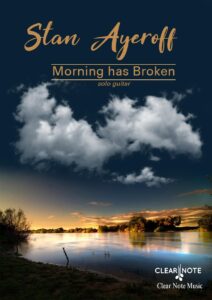 |
|
| Stan Ayeroff – Two arrangements for Guitar Tonight I Celebrate my Love and As Time Goes By |
 |
Stan Ayeroff – Two arrangements for Guitar Tonight I Celebrate my Love and As Time Goes By |
| Stan Ayeroff Cavatina and 20 Movie Themes arr. for solo guitar |
 |
Stan Ayeroff Cavatina and 20 Movie Themes arr. for solo guitar |
| Stan Getz You Stepped Out Of A Dream |
 |
|
| Stan Getz Bossa Nova Tenor Sax |
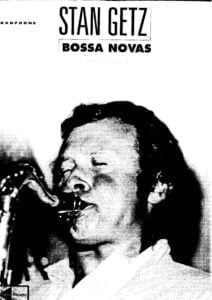 |
|
| Stan Getz Jazz Sambas – Bossa novas |
 |
|
| Stan Getz Omnibook For Bb B Flat Instruments |
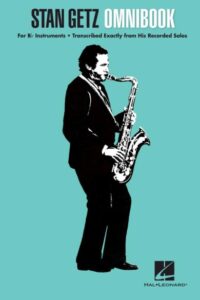 |
Stan Getz Omnibook For B Flat Instruments |
| Stan Getz Omnibook For C instruments Transcribed exactly from his recorded solos |
 |
Stan Getz Omnibook For C instruments Transcribed exactly from his recorded solos |
| Stan Getz Omnibook For Eb E Flat Instruments |
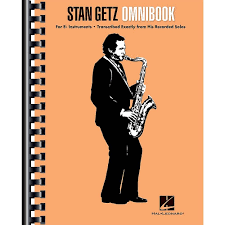 |
Stan Getz Omnibook For E Flat Instruments |
| Stan Getz Sax Solos |
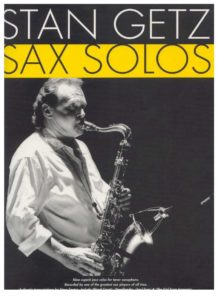 |
Stan Getz Sax Solos |
| Stan Getz Solo Transcriptions |
 |
|
| Stanchinsky 5 Preludes Pour Piano |
 |
|
| Stanchinsky – Prelude in Lydian Mode | Stanchinsky – Prelude in Lydian Mode | |
| Stanchinsky_-_Prelude_in_Lydian_Mode.mscz | ||
| Stand By Me Piano by Ben E. King | Stand-By-Me-Piano | |
| Stand my ground (Within Temptation) | ||
| Standard Pops 1 Guitar Solo Collection with TAB arr. by Michimo Tashima |
 |
Standard Pops 1 Guitar Solo Collection with TAB arr. by Michimo Tashima.pdf |
| Standard Pops 2 Guitar Solo Collection with TAB arr. by Michimo Tashima |
 |
Standard Pops 2 Guitar Solo Collection with TAB arr. by Michimo Tashima |
| Standards 89 Classic Song Piano Vocal Guitar (Budget Books) |
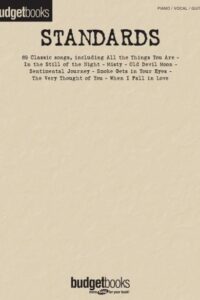 |
Standards 89 Classic Song Piano Vocal Guitar (Budget Books) |
| Standards Real Book The Standards Real Book Jazz In C Version – A Collection of some of the greatest songs of the 20th Century |
 |
The Real Book Jazz Standards In C Version |
| Ständchen Franz Schubert (Guitar Arr.) |
 |
|
| Ständchen – Franz Schubert (Guitar Arr.) (Musescore File).mscz | ||
| Stanislav Borisov Advanced Harmonic Exercises For Jazz Piano |
 |
|
| Stanislav Borisov Harmonic Exercises For Jazz Piano |
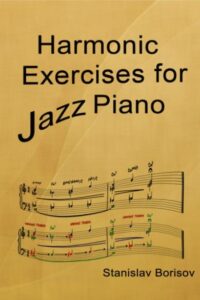 |
|
| Stanislav Borisov Melodic Exercises For Jazz |
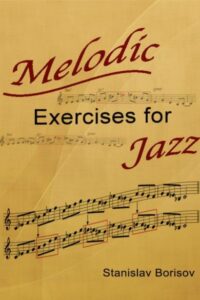 |
|
| Stanley Clarke Collection BASS songbook 16 masterpieces |
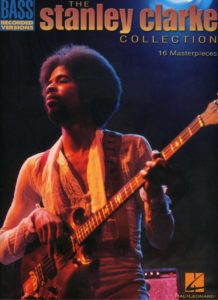 |
|
| Stanley Clarke Songbook |
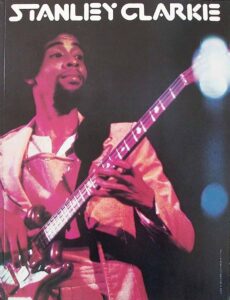 |
Stanley Clarke Songbook Contents |
| Stanley Jordan – Guitar Exercises Pluck To Touch | Stanley Jordan – Guitar Exercises Pluck To Touch | |
| Stanley Jordan – Guitar Exercises Pluck To Touch (Musescore File).mscz | ||
| Stanley Myers – Cavatina (from the flm The Deer Hunter) | Stanley Myers – Cavatina (from the flm The Deer Hunter) | |
| Stanley Yates Classical Guitar Technique from Foundation to Virtuosity (Part 1) Foundation |
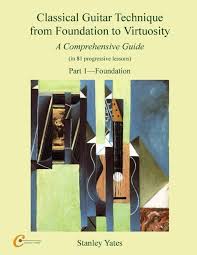 |
|
| Stanley Yates Classical Guitar Technique from Foundation to Virtuosity (Part 2) Mastery and Virtuosity |
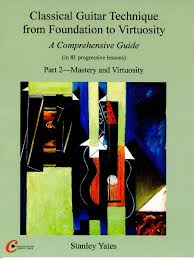 |
|
| Star Dust – Hoagy Carmichael (Musescore File).mscz | ||
| Star Trek – Complete (Themes from all TV shows and movies) Piano Solo |
 |
Star Trek – Complete Theme For Piano Solo |
| Star Trek – The Motion Picture Theme – Jerry Goldsmith |
 |
|
| Star Trek – The Voyage Home by Alenxander Courage and Leonard Roseman (Piano Solo) | Star Trek – The Voyage Home by Alenxander Courage and Leonard Roseman (Piano Solo) | |
| Star Trek EASY Piano Complete Theme Music 2nd Edition Themes From All TV Shows And Movies Easy Piano By Jerry Goldsmith Alexander Courage and Dennis Mccarthy |
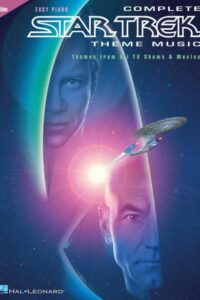 |
Complete Star Trek Theme Music 2nd Edition Themes From All Tv Shows And Movies Easy Piano By Jerry Goldsmith And Dennis Mccarthy |
| Star Trek Highlights From Star Trek Into Darkness Conductor Score Michael Giacchino Arr. By Michael Brown | Star Trek Highlights From Star Trek Into Darkness Conductor Score Michael Giacchino Arr. By Michael Brown | |
| Star Trek Into Darkness (Main Theme) Michael Giacchino |
 |
|
| Star Trek Into Darkness London Calling Michael Giacchino Guitar Tablature |
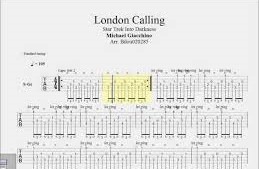 |
|
| Star Trek Into Darkness London Calling Michael Giacchino Piano Solo |
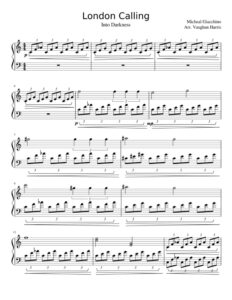 |
|
| Star Trek Music from the motion picture – Piano Solo by Michael Giacchino |
 |
Star Trek Music from the motion picture – Piano Solo by Michael Giacchino |
| Star Trek The Motion Picture – The Enterprise – Jerry Goldsmith (Musescore File).mscz | ||
| Star Wars – Piano Duet (Williams John (Cop)Keveren Phillip (Crt)) |
 |
|
| Star Wars 12 Classics From A Galaxy Far Far Away Piano Solo The Phillip Keveren Series |
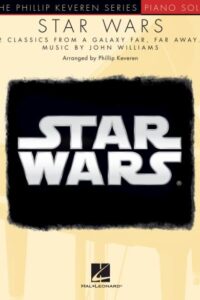 |
Star Wars 12 Classics From A Galaxy Far Far Away Piano Solo The Phillip Keveren Series |
| Star Wars Episode 1 – The Phantom Menace – Duel Of The Fates – John Williams |
 |
|
| Star Wars Episode 5 – The Empire Strikes Back – Main Theme | Star Wars Episode 5 – The Empire Strikes Back – Main Theme | |
| Star Wars Episode 5 – The Empire Strikes Back – The Asteroid Field – John Williams | ||
| Star Wars For Beginning Piano Solo |
 |
Star Wars For Beginning Piano Solo |
| Star Wars The Force Awakens Piano Solo |
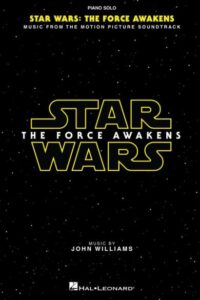 |
Star Wars The Force Awakens Piano Solo |
| Star Wars The Rise Of Skywalker Easy Piano |
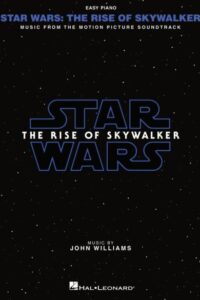 |
Star Wars The Rise Of Skywalker Easy Piano |
| Stardust Crusaders – Jotaros Theme From Jojos Bizarre Adventures |
 |
|
| Stardust Ilan Eshkeris by Ian Sapiro A film score guide (Book) |
 |
|
| Starfox64 – Maintheme – Kondokoji |
 |
|
| Status Quo Rock All Over The World Piano Vocal.mscz | ||
| Status Quo – Rockin All Over The World Guitar Vocal Album Songbook |
 |
Status Quo – Rockin All Over The World Guitar Vocal Album Songbook |
| Status Quo Whatever You Want Guitar Tab | Status Quo Whatever You Want Guitar Tab | |
| Status Quo Guitar Legends Guitar TABs |
 |
Status Quo Guitar Legends Guitar TABs |
| Status Quo In The Army Now (guitar) |
 |
|
| Status Quo Living On An Island Bass Transcription | Status Quo Living On An Island Bass Transcription | |
| Status Quo Rock Til You Drop Guitar Songbook |
 |
Status Quo Rock Til You Drop Guitar Songbook |
| Status Quo Rockin All Over The World |
 |
|
| Stavros Lantsias Waltz of the Eyes |
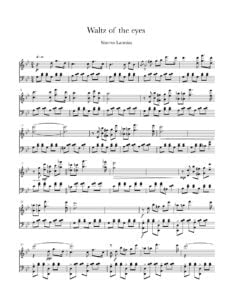 |
|
| Steamboy – Manchester1886 – Steve Jablonsky | ||
| Steamby – Flyinthesky – Steve Jablonsky | ||
| Steely Dan Complete Piano Vocal Guitar Chords |
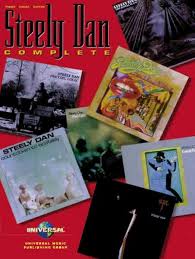 |
Steely Dan Complete Piano Vocal Guitar Chords |
| Steely Dan Reelin In The Year By Brian Sweet (Book Biography) |
 |
|
| Steely Dan Songbook Complete to Aja Piano Vocal Guitar Chords |
 |
Steely Dan Songbook Complete |
| Steely Dan The Best Of Steely Dan Guitar Tablature |
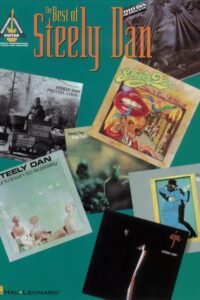 |
Steely Dan The Best Of Steely Dan Guitar Tablature |
| Stefan Schyga Guitar Learn How To Play The Classical Guitar |
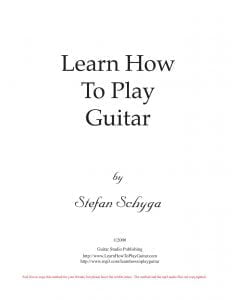 |
|
| Stefano Bollani – Antonia (Antonio Zambrini) spartiti Jazz Transcription |
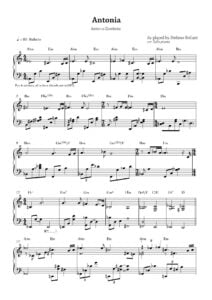 |
|
| Stefano Bollani – Antonia Antonio Zambrini (Jazz Transcription) (Musescore File).mscz | ||
| Stefanuk Misha V. – Jazz Piano Chords |
 |
|
| Steinway Jazz Piano Play Along |
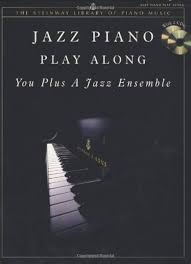 |
Steinway Jazz Piano Play Along |
| Steinway Simply Elegant Piano Volume 1 |
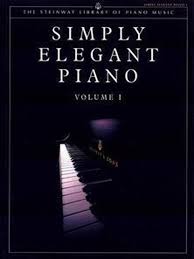 |
Steinway Simply Elegant Piano Volume 1 |
| Stella by Starlight by Ned Washington and Victor Young JAZZ PLAY ALONG LEAD SHEET MUSIC | Stella by Starlight | |
| Stella By Starlight Victor Young (Jazz Standard) (Musescore File).mscz | ||
| Stella, Simone – Canon on the name B.A.C.H. (piano) |
 |
|
| Stella, Simone – Etude-Bizzarria (cello) |
 |
|
| Stella, Simone – Jeux de cromorne (organ) |
 |
|
| Stella, Simone – Jeux de flutes (organ) |
 |
|
| Stella, Simone – Les fleurs du mal (cello&piano) |
 |
|
| Stella, Simone – Victimae Paschali, versetto (organ) |
 |
|
| Stelvio Cipriani Anonimo Veneziano |
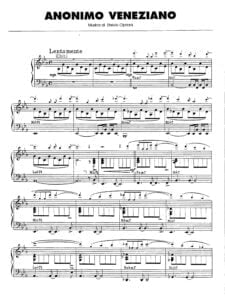 |
|
| Stephan Moccio Tales Of Solace Piano Solo |
 |
Stephan Moccio Tales Of Solace Piano Solo |
| Stephane Boget – Les Secrets Du Hard Rock (FR) avec audio MP3 et Tablature |
 |
secrets du hard rock |
| Stephen Duro – Forget Me Not Waltz (ABRSM Piano) |
 |
|
| Stephen Foster Songbook (published 1854) |
 |
|
| Stephen Goss Guitar Concerto 2012 Complete Score for guitar and orchestra |
 |
|
| Stephen Hills from Helplessly Hoping Guitar Tablature from Crosby, Stills and Nash | Stephen Hills from Helplessly Hoping Guitar Tablature from Crosby, Stills and Nash | |
| Stephen Hough Song Transcriptions for solo piano |
 |
|
| Stephen Sanchez – Until I Found You Sheet Music |
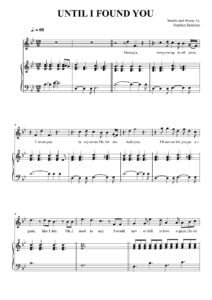 |
|
| Stephen Schwartz Songbook |
 |
Stephen Schwartz Songbook |
| Stephen Sondheim Epiphany from Sweeny Todd The demon barber of Fleet Street (Musicals) | Stephen Sondheim Epiphany from Sweeny Todd The demon barber of Fleet Street | |
| Steve Eckels – 20 Easy Classical Guitar Pieces For Kids with TABs |
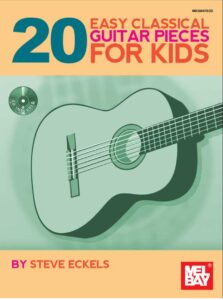 |
Steve Eckels – 20 Easy Classical Pieces For Kids with TABs |
| Steve Green – Find us faithful – Easy Piano |
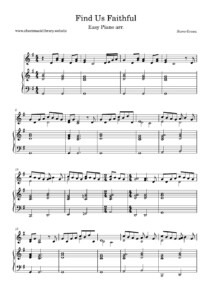 |
|
| Steve Green – Household Of Faith (Piano solo sheet music) |
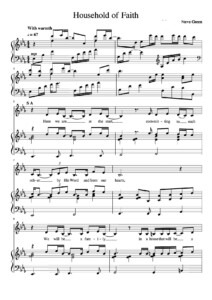 |
|
| Steve Howe – All My Yesterdays (Book) |
 |
|
| Steve Howe Guitar Pieces |
 |
Steve Howe Guitar Pieces |
| Steve Khan Contemporary Chord Khancepts |
 |
|
| Steve Lacy Findings My Experience with the Soprano Saxophone (English, French) (Book) |
 |
|
| Steve Lockwood Essential Techniques Of Jazz And Contemporary Piano |
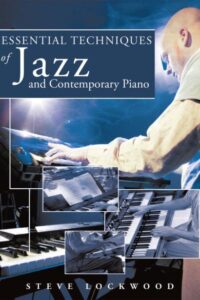 |
|
| Steve Miller Band Young Hearts Complete Greatest Hits Piano Vocal Guitar |
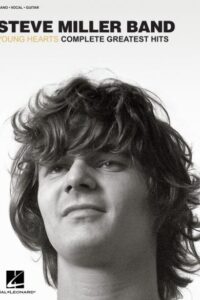 |
Steve Miller Band Young Hearts Complete Greatest Hits Piano Vocal Guitar |
| Steve Morse Southern Steel Guitar Songbook with Tablature |
 |
Steve Morse Southern Steel Guitar Songbook |
| Steve Reich Piano Phase | Steve Reich Piano Phase | |
| Steve Reich – Writings On Music (Book) | Steve Reich – Writings On Music (Book) | |
| Steve Reich Electric Counterpoint Solo |
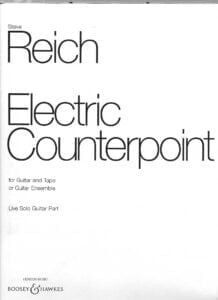 |
|
| Steve Reich Music For 18 Musicians For Ensemble |
 |
|
| Steve Reich Six Pianos | Steve Reich Six Pianos | |
| Steve Vai – Guitar Styles & Techniques (Signature Licks) with Tablature |
 |
Steve Vai – Guitar Styles & Techniques (Signature Licks) |
| Steve Vai Alien Love Secrets Naked Vamps Guitar Tabs signature licks |
 |
Steve Vai Alien Love Secrets Naked Vamps Guitar Tabs signature licks |
| Steve Vai Fire Garden Songbook Guitar Tabs |
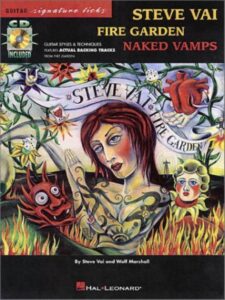 |
|
| Steve Vai Flexable Leftovers Guitar Tabs |
 |
Steve Vai Flexable Leftovers Guitar Tabs |
| Steve Vai Inviolate Guitar Tablature |
 |
Steve Vai Inviolate Guitar Tablature |
| Steve Vai Modern Primitive Guitar Tablature |
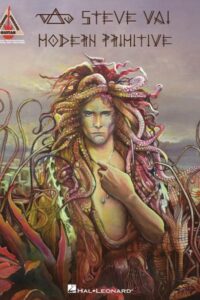 |
Steve Vai Modern Primitive Guitar Tablature |
